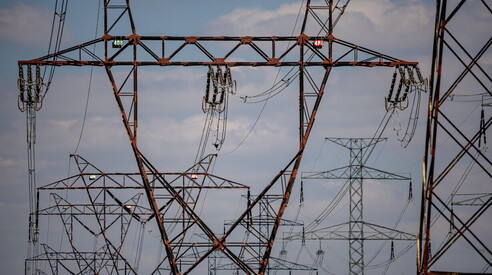Energy costs businesses too much. How to change the game.


(EPA photo)
notes
High energy prices remain a competitive handicap for businesses in Italy, with electricity costs among the highest in Europe. Penalized by dependence on gas and charges for renewables, targeted strategies and incentives are needed.
On the same topic:
Is the cost of electricity a competitive disadvantage for Italian businesses? And how much is it? What are the reasons? A back-and-forth in the Corriere della Sera between Francesco Giavazzi and Giorgio Boneschi, director general of the energy producers' association Elettricità Futura, helps to clarify the issue. The economist and columnist for Via Solferino had emphasized, in an article published the other Sunday, that among the reasons for the high Italian prices, which are damaging the competitiveness of businesses, are both excessive dependence on gas and the subsidy binge of recent years. Boneschi responds by fundamentally challenging the analysis: " It's false that Italian prices are the highest ." As evidence, he recalls that "in 2024, a German household paid an average of 22 percent more for electricity than an Italian one." It also emphasizes that most incentives for renewables concern old plants, while "new capacity is developed through competitive auctions (Fer-X)", so "the renewables market is fully competitive". It concludes that "the most effective way to lower costs compared to other European countries [is] to increase the use of long-term contracted renewable sources".
The analysis is entirely biased. First, Giavazzi refers to businesses, not households. According to Eurostat data, in 2024, German energy-intensive businesses paid €143/MWh, compared to €149 for their Italian competitors. However, in both countries, they enjoy specific incentives. According to a document from the Bdi (German employers' association), thanks to these, the bill for German energy-intensive businesses in 2023 was €60/MWh; in 2024, it will likely be closer to €55. In Italy, the various incentive measures bring the effective price into the €100-€150 range (with perhaps some large consumers dropping to €70-€80). Therefore, the difference exists and is significant, and depends both on internal factors within the electricity system (the higher cost of energy and many ancillary charges) and external factors (support policies).
Then there's the more general issue of subsidies for renewable energy sources, which largely fall on the shoulders of small and medium-sized enterprises, with a markup of up to €70/MWh (Il Foglio, July 30). It's true that this is primarily the legacy of old subsidy schemes no longer in force, but this knowledge is of little consolation to those who still have to pay the costs. It's not true, however, that the new incentive schemes are free of charges. First, by guaranteeing a fixed price for the energy produced (including that which the system is unable to withdraw), they by definition involve the socialization of a risk. Second, their expected cost is spelled out in black and white in the provisions with which the European Commission approved these state aids: €35.3 billion for Fer-2 (for innovative technologies) and €9.7 billion for Fer-X (for mature technologies) over the next fifteen years. The proof? Without financial support, investment slows: this week, a German auction to build offshore wind farms failed for precisely this reason.
In this context, would simply increasing the share of renewable sources in the energy mix lower prices? The answer is not obvious. On the one hand, it would certainly lower wholesale electricity prices (as is happening in Germany) . On the other, it would impose higher costs for incentives, for managing production variability, and for upgrading grids. The net balance between these components is an empirical question that cannot be answered in general. There are cases where the effect on prices has been strongly negative (Spain, which also underestimated the implications for system security) and others where the opposite is true (Germany). To give just a quick overview of the additional costs to consider: the capacity market to cover the fixed costs of the conventional plants needed to compensate for the variability of renewables costs €1.7 billion per year; the MACSE, through which Terna will develop large storage capacity, has an estimated value of approximately €17.7 billion over the next fifteen years; Network investments will cost 23 billion for transmission and around 60 for distribution over the next decade.
All this in a context where demand continues to decline and renewables are crowding into areas with greater generation capacity (also due to the Fer-X). This depresses wholesale energy prices, especially during the middle of the day (with the result that operators struggle to recoup investments) and multiplies system prices. This is not to mention the impact of the practices that appear to emerge from the ARERA survey on wholesale markets, according to which prices were artificially inflated in 2023-24. Denying that there is a problem with energy costs in Italy is, therefore, shortsighted. Giavazzi's invitation to reflect on the effectiveness and efficiency of the instruments adopted should be welcomed, not annoyed, and should form the basis for a broad national debate.
More on these topics:
ilmanifesto





